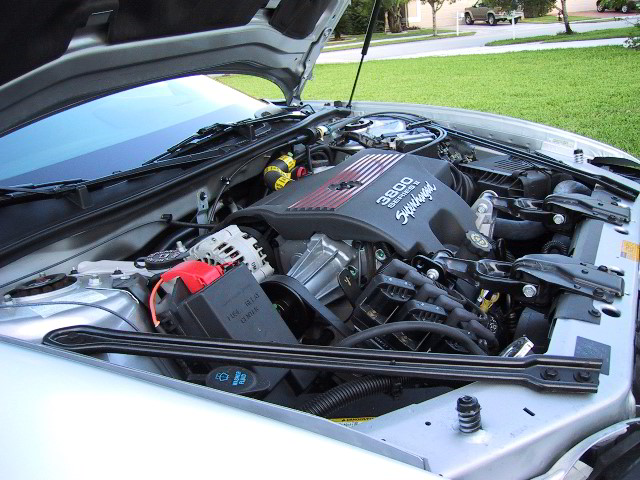Pontiac / Pontiac Grand Prix GTP

Specs
-
Engine3.8L
-
Power264 @ 5400 rpm
-
Transmission4-spd aut w/OD
-
Drivetrainfront-wheel
-
Seating5 passengers
-
Fuel Capacity64 liters
-
MPG10.7 City / 6.9 HWY
Specs
Worldwide Trends
GEO Interests
Videos / Pontiac Grand Prix GTP
99 Pontiac Grand Prix GTP VS. 07 BMW 328xi
2005 Pontiac Grand Prix GTP Start Up, Engine, and Full Tour
Pontiac Grand Prix GTP Old Start
Pontiac Grand Prix GTP Supercharger Pulls
Will you like to own a Pontiac Grand Prix GTP?
 Overview
Overview
The car was manufactured by the Pontiac section of the General Motors group. Initially brought into the market as the first full size model of the Pontiac section. The name depicted in Grand Prix was also applicable for cars in the luxury car market segment along with the mid-size offers and proper slotting below the Bonneville line up. With a B-body platform and a 2 door coupe body style, it is facilitated with both manual and automatic transmission style.
History
 Starting from the gradual drain out of the Pontiac Ventura out of the market, the Grand Prix made its first public appearance representing the Pontiacs as early as 1962. It was primarily a standard Catalina coupe with minimum chrome trim in the outer part and a much more comfortable interior. The factory race powertrain was installed only in a handful of cars under the instructions of the Engineering head of the company. Distinctive grills with tail lights were the other details. The initial Grand Prix was similar to the other Pontiacs. The bucket seats contained Morrokide vinyl that had a floor shifting compartment for storing purposes with the Tachometer near the front. The rare seat had an armrest at the centre and resembled a bench. Even though the radio speaker grille incurred large expenses, they can be made functional.
Starting from the gradual drain out of the Pontiac Ventura out of the market, the Grand Prix made its first public appearance representing the Pontiacs as early as 1962. It was primarily a standard Catalina coupe with minimum chrome trim in the outer part and a much more comfortable interior. The factory race powertrain was installed only in a handful of cars under the instructions of the Engineering head of the company. Distinctive grills with tail lights were the other details. The initial Grand Prix was similar to the other Pontiacs. The bucket seats contained Morrokide vinyl that had a floor shifting compartment for storing purposes with the Tachometer near the front. The rare seat had an armrest at the centre and resembled a bench. Even though the radio speaker grille incurred large expenses, they can be made functional.
Evolution of the vehicle
The Pontiac Grand Prix GTP has never failed to benefit the car owner since the last few generations. Initially the car was dedicated only to car lovers. The vehicle possesses a unique style in its body design and is not made for the family. Both coupe and sedans offered stylish bodies in the next decade. Ultimately plenty of effort has been put in to achieve more comfort and increase the efficiency.
Recalling
In early 2008, the working committee of General Motors came up with an idea of recalling back the old Pontiac Grand Prix GTP models. This recalling procedure led to a particular problem that ignited fire in the engine compartments of the vehicle. Roughly around 230 accidents were reported. It affected several equipments which were supercharged and belonged to the series II engine. The owners were asked not to park the vehicles in garages and carports. This instruction was pressed on by General Motors. The damaged supercharged engine needed a changeover of the valve gasket. According to General Motors board, the oil leak exhausts increases the chances of dangerous accidents. The Grand Prix community is of the opinion that the recall did not have much of a role to play in reducing the accidents. Improper fuel rails were mainly responsible for the quick disconnection of rings. The sister car buck and the Grand Prix GT were well provided with the SE versions as well. Removal of the spark plug is mainly carried out for non-supercharged V6. The valve covered gasket is however not changed with the 3.8 engine.
Woes
 The versions of Pontiac Grand Prix GTP which had the on star outfit, faced inconveniences due to outdated technological approach. The wireless digital and cellular network facilities were made compulsory by the government. This meant that there were many people who were not being able to afford the services.
The versions of Pontiac Grand Prix GTP which had the on star outfit, faced inconveniences due to outdated technological approach. The wireless digital and cellular network facilities were made compulsory by the government. This meant that there were many people who were not being able to afford the services.



























